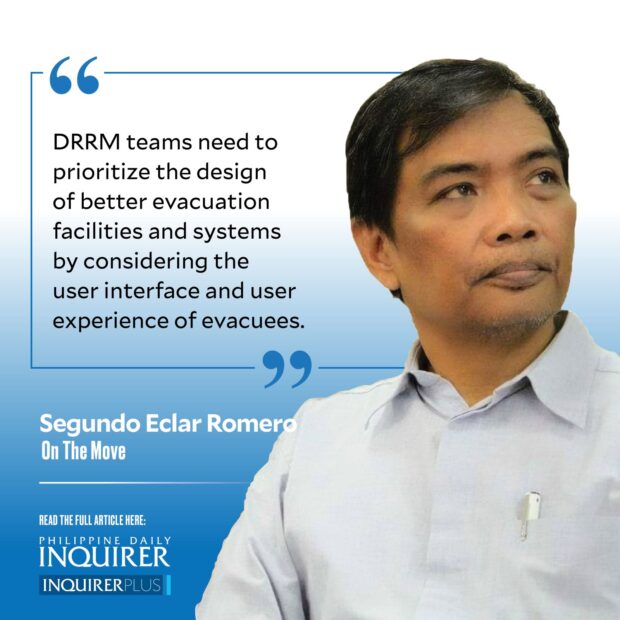Smarter evacuation centers
When the world is told that the Philippines is among the top three most disaster-prone countries, it seems just like a curious factoid, unless you are a Filipino who happens to get more than your share of these hazards.
This year is marked by a particularly abundant amount of hazards for the country. Over the past few months, we have experienced a succession of typhoons and floods. As if these were not enough, we have had some man-made disasters as well, most jarring of which was the Jan. 1 power outage that hit the Ninoy Aquino International Airport, spoiling the holiday travel of outbound and inbound visitors to the country. That outage would be followed by two more. More disasters are brewing, like the Maharlika Investment Fund, if we go by the unpopularity of the measure.
This week, we are seeing three volcanoes — Mayon, Taal, and Kanlaon — in a fascinating concert of increasing restiveness. Altogether, the confluence of these scenarios of hazards invites several comments.
The first positive comment I make is on the inclusion of animals — pets and livestock — in the Albay evacuation process. This is a laudable feature of the current disaster risk reduction and management (DRRM) efforts in Albay. For a long time in the past, farmers and rural residents refused to be evacuated despite grave danger because they worried about leaving their pets and livestock behind.
It will take some time before the systems for evacuating pets and livestock will be polished. There is much designing to be done. There are systems to be developed for inventory, collection, transport, corralling, feeding, and other management activities. For instance, will animals be returned to their specific owners at the end of the evacuation period, or will only approximate quantities be used, especially if losses are incurred and these must be distributed across the livestock pool?
My second comment is on the rather disappointing visuals on television and newspapers coming from the evacuation centers in the ongoing response to the Mayon volcano eruption, where the people complain that the evacuation centers are intolerably hot. Apart from the poor ventilation of many evacuation centers, families are provided, for purposes of privacy and modular arrangement, with completely enclosed camping tents with zipper doors.
These are most inappropriate for Philippine climatic conditions and should have been shunned from use in evacuation centers decades ago because they have been proven to be detrimental to the health of evacuees. It is terribly dissonant to observe these tents in use in evacuation centers in Albay, reputed to be among local government units in the hall of fame in DRRM in this country.
In the same Inquirer issue last Sunday, I saw an article on the dwindling market for abaca. Just offhand, is it possible to use abaca to provide a breathable partition fabric that provides privacy while allowing ventilation? That the Bicol region is the area where this natural resource abounds makes this possible innovation initiative so much more notable.
There could be other better partition materials. In addition to abaca, how about sawali and similar native products? We do not know. But we should find out. DRRM teams need to prioritize the design of better evacuation facilities and systems by considering the user interface and user experience of evacuees. Feedback from evacuees is critical. The use of plastic tents is an indicator we have not heeded the feedback from evacuees.
Apart from the need for private spaces in common areas to provide better ventilation and privacy and dignity of evacuees, evacuation centers often face shortages of clean and accessible water, leading to hygiene and health issues. Proper food preparation and distribution can be challenging in overcrowded evacuation centers. The availability of sufficient and well-maintained sanitation facilities is often insufficient, leading to discomfort and increased health risks.
Additionally, evacuation centers should be designed for accessibility by individuals with disabilities or limited mobility. Critical for self-navigation and management of evacuees is intuitive layout and signage. An area for improvement is the use of graphic design — icons, symbols, and typography — to better communicate with and inform evacuees of the structures, systems, and procedures that make evacuation centers effective and efficient. Clear signage and a well-designed layout help evacuees navigate the facility easily, reducing stress and confusion.
In a word, our evacuation centers should be smarter evacuation centers.





















